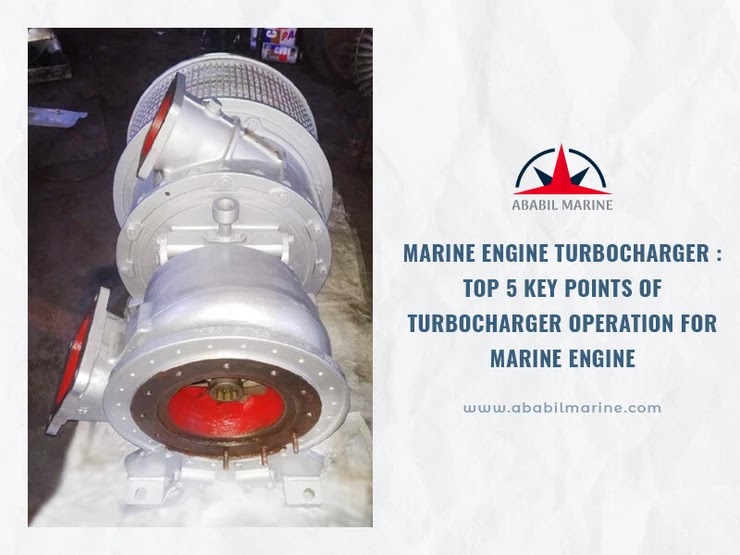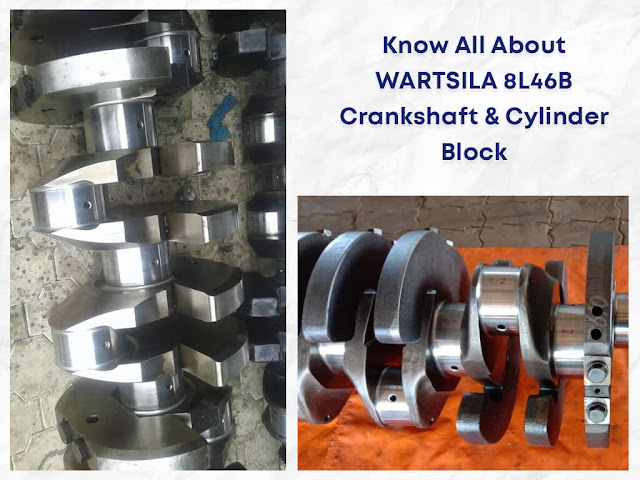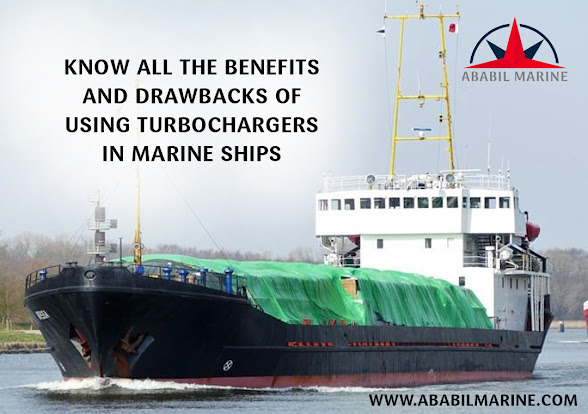Best 5 basis of turbocharger operations in marine engine turbochargers
What is a marine engine turbocharger?
Air is required for fine combustion in a marine diesel engine. By increasing the density of the air entering the engine, the total power output of the entire engine can be significantly increased. We are going to look at how turbochargers work in this article.If there is no turbocharger in the engine, air is drawn into the engine from a low pressure area created as the piston moves down. there is no way to increase or decrease the air inlet pressure in this system, which is also insufficient to ignite the fuel.
Turbochargers are used to supply higher air density to the engine in order to solve this problem. Accordingly, the marine engineturbochargers is a forced induction mechanism for marine diesel engines. The engine cylinder is forced into compression, allowing a large amount of fuel to enter. Power has increased accordingly, as has the power-to-weight ratio of the engines.
5 Key Points of Turbocharger Operation:
Monitor Turbocharger Settings:
Watch-keepers often neglect or forget to check important
settings on their shifts when it's a cinch.
As part of the monitoring of the turbocharger, the following should be
considered:
Acceleration of the turbocharger
Temperatures at the inlet and outlet of the exhaust gases
Reduced temperature of the water entering and leaving the system
lubricant in the turbochargers
Pressure gauge that measures the differential pressure of the compressor air
Always pay attention to the noise of the turbocharger:
Identifying a problem with a car using sound is one of the best methods available. Problems with the rotating parts of the turbocharger are indicated by any abnormal scratching noise.
Vibration control:
Turbochargers are high speed rotating machines that produce high pressures. Some of them are capable of reaching higher speeds than any other machine on board the ship, in fact. As a result, they vibrate naturally. To transfer these vibrations to the structure of the ship, an engine reinforcement is carried out near the turbocharger of the marine engine. This can be caused by worn bearings, a high "K" value, or loose foundation bolts, so the motors should be stopped.
Check for exhaust leaks:
When using a turbocharger, you are dealing with extremely hot gases. Fuel enters through the engine and exhaust pipes exit through the funnel. With a spacer between the two, these two points are connected by a flange. These gaskets must not lose the exhaust. gas, as this could cause a fire or create a smoky atmosphere in the engine room.
Check the oil pan for leaks:
Keep an eye on the oil level and temperature in turbochargers with separate oil pan. causing oil to come in contact with hot spots on the engine body and exhaust gases. Fires in the engine room are the result of such accidents.
Marine Turbocharger Maintenance
Intake Filters:
Mesh filters are used on the turbocharger of the marine engine to prevent particulates, wet and oily air mixtures, etc., from entering the compressor turbine and contaminating / damaging the turbine blade. Above the turbocharger compressor, it is recommended to install an additional felt filter to absorb oily air mixtures, as these filters can be changed frequently. The filter net should be chemically cleaned every two months or according to the operating hours specified in the owner's manual.
Check Clearances:
Before performing a full inspection, the marine engine turbocharger is opened for overhaul. This includes checking the crankcase and blade tip clearance, the "K" value of the shaft, which determines the correct alignment of the shaft, and whether the labyrinth seal, which is installed between the impeller and the shield exhaust, works Turbocharger Flushing: Manufacturers recommend cleaning the turbine sides of the turbocharger and compressor on a regular basis. Carbon, soot and other exhaust deposits are removed by cleaning the impeller and fan sides. Buy refurbished and new marine turbochargers from Ababil Marine.
Soot Blow:
Having a dirty exhaust passage after the marine engine turbocharger will reduce the performance of the turbocharger (exhaust trunk and economizer). Turbine blades can be damaged or even broken due to the exhaust gas boiler pipes need to be cleaned of soot every day. Power Distribution: The exhaust gases produced by the combustion process inside the engine's cylinders feed the turbocharger. Since an engine has multiple cylinders, it is important that all cylinders have the same amount of power. The turbine side of marine engine turbochargers will increase if one cylinder is producing more power due to a fuel valve malfunction.
Power Distribution:
The exhaust gases produced by the combustion process inside
the engine cylinders power the turbocharger. As an engine has multiple
cylinders, it's important that all of the cylinders have the same amount of
power. The marine engine turbochargers' turbine side will surge if one cylinder
is producing more power due to a malfunctioning fuel valve. Power distribution
in the ship's engine must be uniform.





Comments
Post a Comment